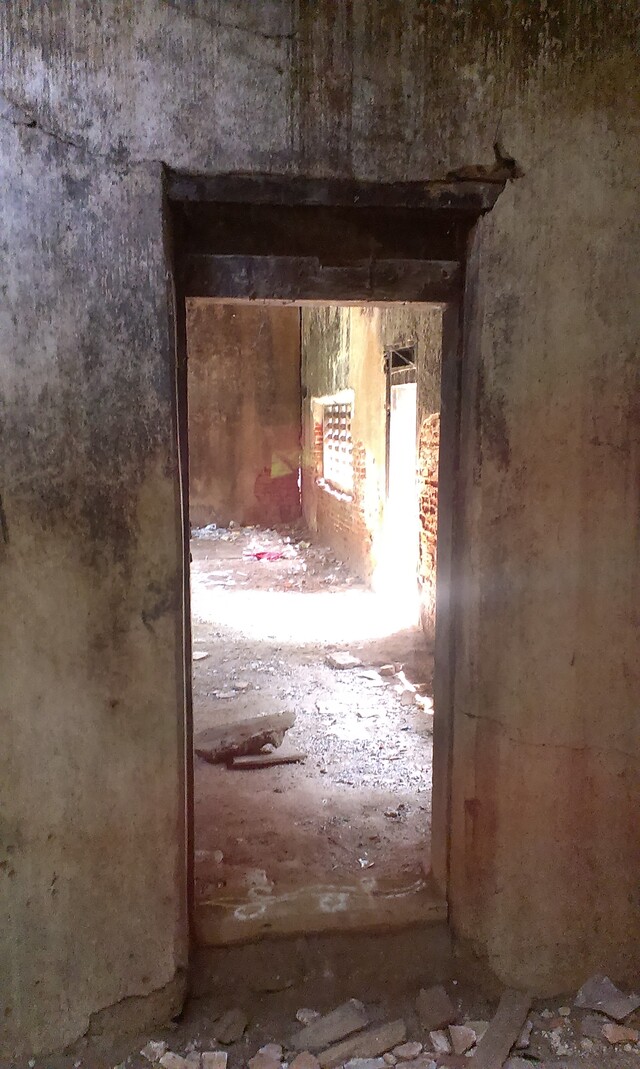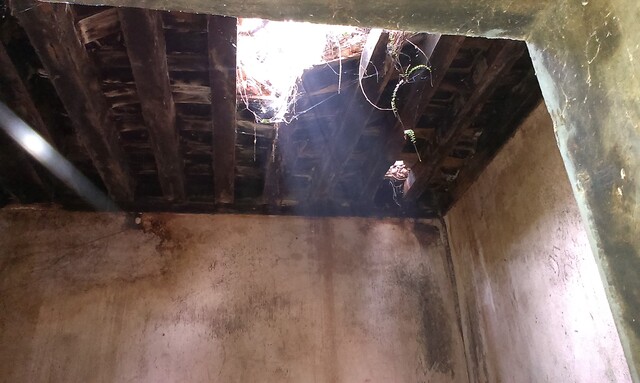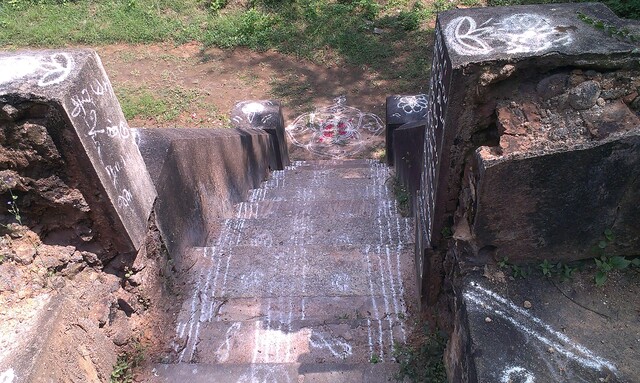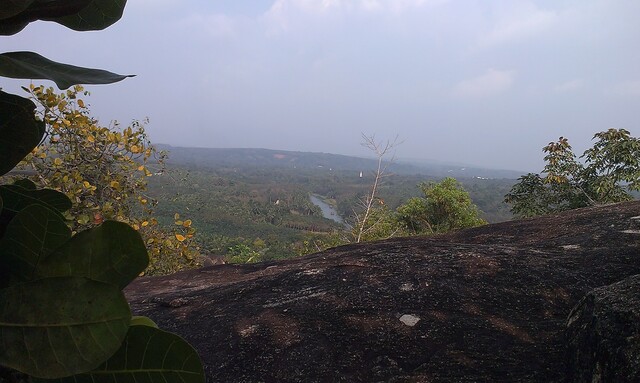A pillar, a ruined fort and a temple
Published on
Tags: travel
I've often wanted to meet friends I made on social media in person. The opportunity came in early 2015. I knew a few people in facebook from my hometown Nagercoil. During the Christmas season, a few of us floated an idea to have a get together and travel to some place. The idea was to not go to the usual places like the Kanyakumari beach, Padmanabapuram palce, etc, but to unusual and lesser known places.
Jan 17, winter of 2015.
Four of us decided to meet - me - a PhD student, a botanist, a journalist (and also her 2 year old daughter) and a lawyer. I started out in the morning and first met the botanist. He became the first ever person whom I met from social media. We went to the lawyer's place and waited for the journalist to show up (she did and was a bit late). After introducing overselves and having a small talk, we planned on covering three places - the memorial for the battle of Colachel, the Eraniel Fort, and the Bhagawati temple.
We travelled in a car for visiting the memorial for the Battle of Colachel, which was fought in 1741. I find it a bit funny that the prefix 'The Battle' is affixed to a place near my hometown. It makes the place sound very important (was probably in the past). After travelling for about 45 minutes, we reached the memorial. The memorial was constructed by the government of India. It was an small plot with a lawn and paths for walking around. There were drawings in the wall of the plot showing the army of the Travncore king. The Dutch attacked the Travancore kingdom, whom they saw as a threat to their factories and trade in the region. Legend has it that during naval battle, the Travancore King Marthanda Varma fooled the Dutch by placing palm trees in the bullock carts, which would seem like cannons from a distance. The sources that I've read in the internet indicate that the Travancore king defeated them on his own. But he probably was helped by the British, who had their own vested interests in the region. After spending some time wandering around the place, we set out for our next destination: the Eraniel fort.
We then searched to the our next destination, Eraniel Fort. At first we thought that the name of the place was Colachel fort, but people whom we enquired told us that there is no such thing as that and there is only a place called the Eraniel Fort. After a while of travelling around and enquiring, we finally reached the Eraniel Fort. The fort was in a dilpidated condition and in ruins due to non-maintenance by the government. It looked more like a palace rather than a fort.
Legend has it that the king prays to Shiva in a temple across the canal near the fort. But one day the canal swelled and he couldn't cross the canal to go to the temple. The king was distraught and prayed to Lord Shiva for forgiveness. Lord Shiva appeared in his dreams and then asked him to a worship a Shiva lingam which will appear in the canal nearby. Legends aside, this was a lesser known, but wonderful fort.
I took a lot of pictures of the ruins of the fort. It was kind of fascinating – seeing an almost forgotten place of the past, wondering who lived here and what it was like in the past.
There were flowers in the king's stone bed, indicating some frequent pujas conducted there. Also flowery patterns in chalk(or ash?) drawn here and there in the fort. Both these indicated that it is not fully forgotten and someone is maintaining it. There was also what looked like a bathing place for the queen.
When we were looking over the fort, someone came to investigate. He claimed to be a journalist and asked us many questions. He probably thought that were were upto some mischief. He seemed okay until we discovered that he was a Hindu fundamentalist and that he suspected that we were Christians trying to investigate the fort for sale or something (he didn't say this directly). My district is considerably polarised along religious lines between Hindus and Christians. Anyway, he wasted a lot of our time.
After this, at around 3 pm, we went to a hotel near Kulasekaram for lunch. I was a vegan at that time (now a sworn meat eater) and opted for a standard south Indian vegetarian meal. My companions were unhappy that I am ordering vegetarian meal in a hotel owned by a Muslim. Also they jokingly asked whether I'm going to marry a Brahmin girl.
The final place that we visited was the Bhagavati temple at Chitral. We got a local person to guide us. It was up a hill and we had to trek a bit to reach it. On the way up, I could get a beautiful scenetic view of the forests around it. The river and the trees and the hills made the view heavenly! Also the place had very little pollution and very little people. This combination made it wonderful. The climb was taxing and the downward journey more so, but the overall physical exertion made it enjoyable.
Bhagavati temple was a Jain temple. There were many cravings in the rocks indicative of that. One of our companions explained the fine difference between Jain and Buddhist halos – Buddhist halos were placed on the head, while Jain halos were above it, with a gap between head and halos. Unfortunately, cameras were not allowed inside temple and one of us had to wait outside with the camera as there were no lockers.
This was a very remarkable get together that I took with people I knew from social media. 'The road less travelled' – was how one of my fellow travellers summed it. Also, I got a couple of books from the journalist companion of mine as a gift. One of the books was a translated version of the Malaylam classic Chemeen which I enjoyed.






